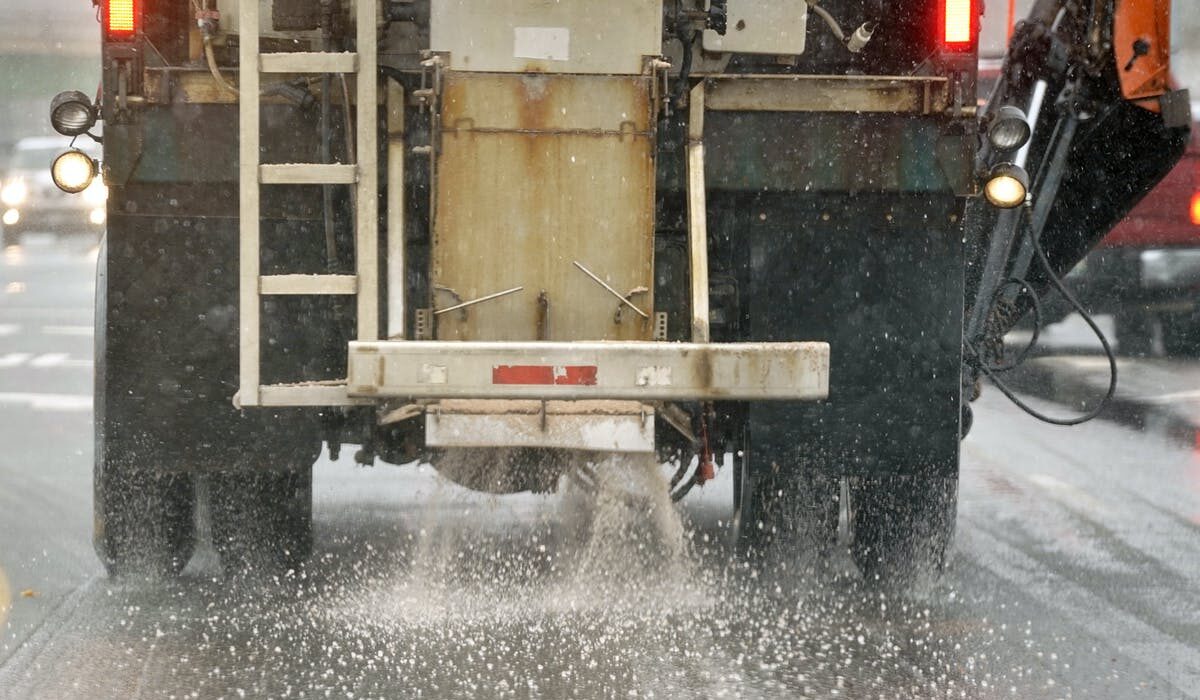Introduction
Winter is the season of precipitation, heavy snow, and icy roads. That’s why people use all kinds of methods to remove the snow and ice from their driveways and pathways. That includes the use of shovels, snowblowers, and road salt. However, storing rock salt isn’t easy since it can harden and becomes a pain to work with. You can ditch storage and search for “landscape companies near me” to hire professionals to clear your driveway or store and use road salt carefully. Let’s check out how to do that:
The Details
- Road salt – Unlike table salt that goes in your food, road salt has a grainy and coarse texture. While it is composed of similar ingredients that make table salt, the texture and use are quite different. It is mostly made of the mineral form of sodium chloride, halite. It is also unpurified and not milled to form small molecules. Most people use road salt to bring down the freezing temperature of the water and melt away the snow and ice from their property.
- Road Salt hardening or clumping – When you apply road salt on the street, pavement, or the asphalt on your driveway, it breaks down the ice and melts it into a mixture of salt and water. This brine has a freezing point that is significantly lower than water. That’s why cities and homeowners continuously apply salt on the road over several days of the week to keep the snow from freezing into ice and keep melting it away.
However, its strength is also its weakness. Road salt is an excellent hygroscopic material. That means it is great at absorbing moisture both in the liquid form and directly from the surrounding air. If you store it in a humid place, it will readily absorb moisture and clump or harden very quickly. With too much moisture is absorbed the composition of the road salt changes and the molecules change their arrangement to harden the salt.
- Avoiding road salt hardening – The best way to prevent road salt from hardening or clumping is to store it in a climate-controlled room or setting. In a climate-controlled room, there won’t be temperature fluctuations and excessive moisture for the salt to absorb and react to. Consider buying a few sealable air-tight bins or containers. Once you open the salt bag, store it in such containers.
It’s also very important to open the bag and store the salt during the early spring season. That’s the best time to store road salt since there’s less moisture in the air and the salt is stored with those conditions. This helps to maintain the road salt and ensure its longevity throughout the warm and cold months till it’s cold enough to freeze the roads.
You can also add large pieces of charcoal inside the sealable container along with the rock salt. Charcoal is a more powerful hygroscopic material that is better at absorbing moisture. It will keep absorbing excess moisture if any, and only harden a bit of salt around it. The rest would be in good condition and ready for use when the snow hits. It’s also best to store salt indoors instead of keeping it outside covered with a tarp or some other material.
- Things to do when road salt hardens – When road salt hardens most of it may be wasted. You have a few options to salvage it and make it usable. First of all, you need to wear protective gear so that it doesn’t get in your eyes. Wear protective glasses to shield your eyes. Next, get a power drill or a hammer and break the hardened ice apart as much as possible.
It may not turn back into its original grainy form, but once it shatters into smaller pieces, you can use a shovel to crush them into smaller pieces and use it for your driveway. If you don’t have a hammer or a power drill, get the salt bag and drop it from a height on a concrete or asphalt surface. The impact would break the hardened salt. You may have to do this several times to break it into small enough and usable chunks.
You can also fill up a bucket with warm water and immerse the hardened road salt inside it. The hardened salt will break down into smaller pieces that are easier to work with. If you are able to use the right amount of warm water, you can even use it in the brine form to melt ice.
- Road salt alternatives – Road salt comes with a lot of storage challenges and also harms the environment. It can destroy the plants in your garden and your turf. It can also damage your car and your driveway if it’s made of concrete. Moreover, there is also a significant shortage of road salt every few years that makes melting driveways and roads very difficult. That’s why it’s best to move away from road salt to other alternatives.
Beet molasses has come up as a viable road salt alternative for melting ice and has been used by many cities in recent years. It is a by-product of beet sugar refining and is more environmentally friendly than road salt. Cheese and pickle brine can also be used instead of road salt. This brine has a lower freezing point than regular road salt and actually soaks into the asphalt and concrete to act as antifreeze for a long time.
The brine also acts as a layer between the snow and the pavement. This prevents the snow from sticking to the pavement and makes shoveling an easier task.
Conclusion
As you can see, road salt storage is tricky and if you aren’t able to do that properly it will inevitably harden. You can also use the above-mentioned methods to avoid road salt from hardening or use road salt alternatives for de-icing your property. Otherwise, outsource the job to professionals by searching for “landscape companies near me”.






